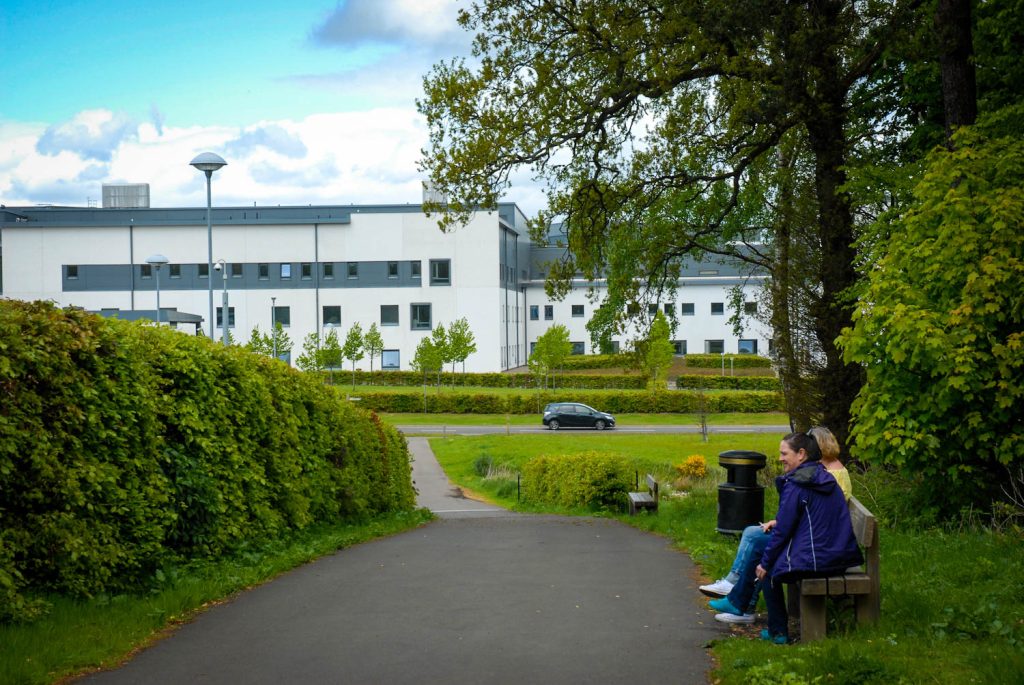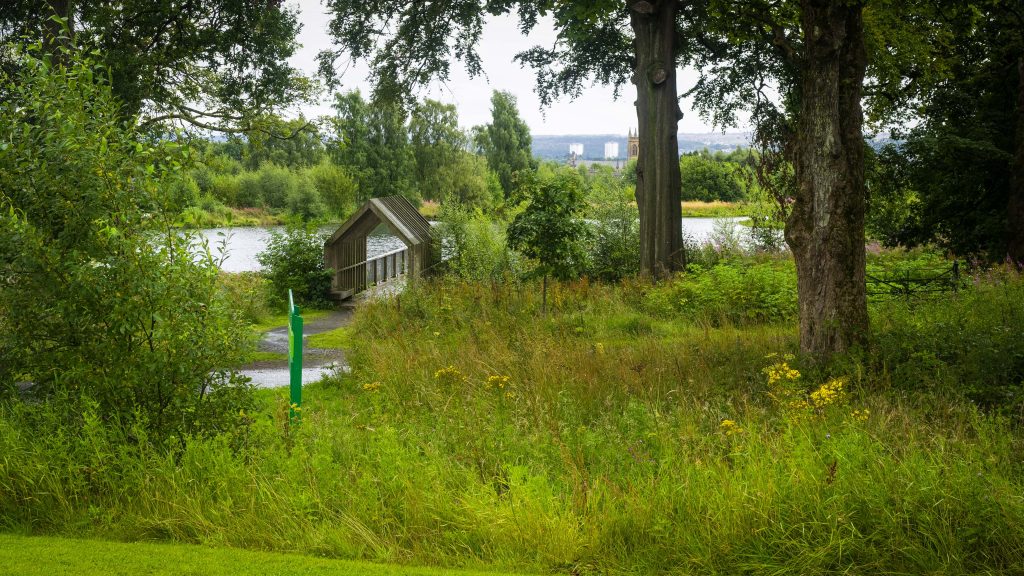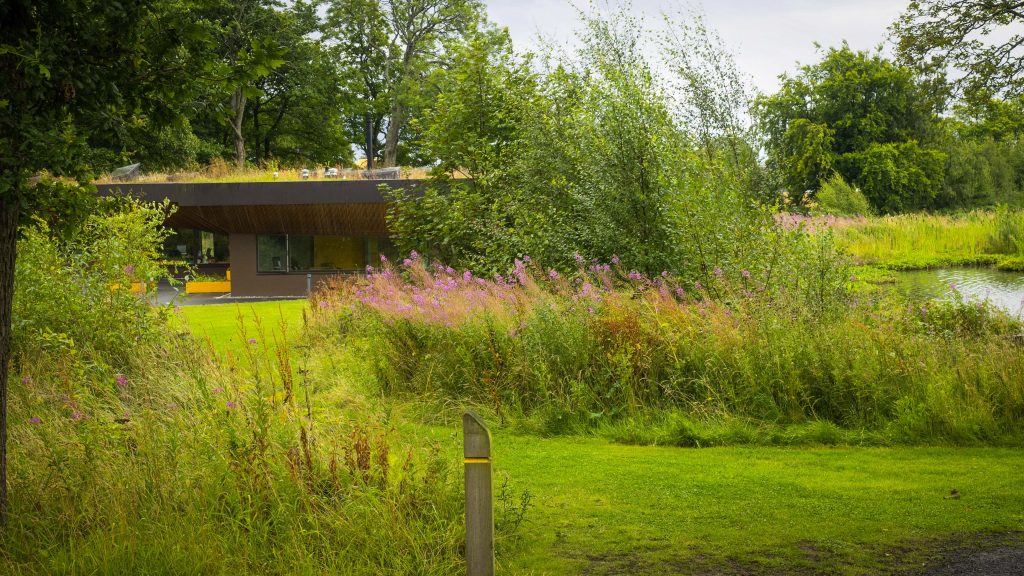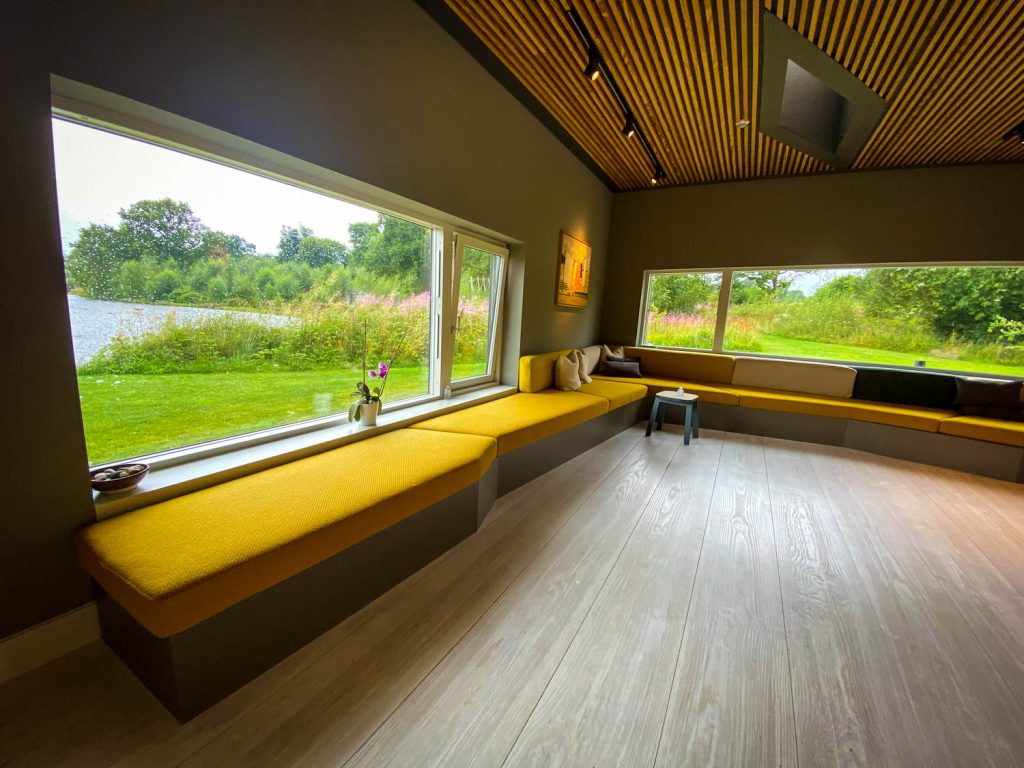We claim a lot of land from the natural world to build ourselves places to live. What if we could construct in a way that works for humans and habitats? That’s the question which led Dr Gemma Jerome to develop the Building with Nature Standard. Intrigued to learn how a green infrastructure framework can help us live healthier, happier lives? You’re in the right place.
Building with Nature is the UK’s first benchmark for green infrastructure. It offers stakeholders in the construction chain – from designer to developer, and public authority to homeowner – best-practice guidance. Building projects that follow these Standards strive for high-quality, cater for occupants’ needs, and work in harmony with the environment. Director of Building with Nature (BwN), Gemma Jerome, told us where the idea originated, how it makes a difference, and what sets it apart from other frameworks.
A CityChanger’s Origin Story
While studying for a doctorate in the mid-2000s, Gemma specialised in local-scale green infrastructure and place-making. “I’ve always been fascinated by what makes a community work and the concept of sustainable communities,” she reflects. Gemma’s interests lie in the themes of “health and well-being, social and health inequalities, and social justice”. This was very much on the political agenda at the time, and Gemma set her sights on a career in the field.
Then came the 2008 financial crash. Britain was plunged into austerity. Budgets were cut, and the agenda our CityChanger was most interested in was kicked to the curb. Sadly, she informs us, this tends to happen when there is a shift in political leadership; measures put in place by one government are often ousted by the next.
Gemma found herself walking a different, but still green, path. In 2015, thanks to her credentials, our CityChanger was employed as a project manager “for what at the time was a research innovation project”. In Gemma’s own words, she was “dropped in as a researcher to scope out and develop a new product”: a building standard. Innovate UK, boosted by a grant from the Natural Environment Research Council, funded the knowledge transfer partnership behind it; a collaboration between the ENGO Gloucestershire Wildlife Trust and the Sustainable Planning Environment Team at the University West of England (UWE).
Unlike many of the 46 regional Wildlife Trusts “who understandably focus their efforts on steering development outcomes through objections,” Gloucestershire decided to try a different tack.
Gloucestershire Wildlife Trust has a long history of engaging with planning and development. The organisation was founded in the post-World War Two era, a period of mass housebuilding, “to make sure that they could protect and enhance ecology, biodiversity, and the county’s wildlife”. But how does this translate into the 21st century city?
The Wildlife Trust was a trusted partner in the county, advising local planning authorities and, if deemed necessary, objecting to development which would harm wildlife. But they were also keen to scope out new opportunities – to move from being reactive to proactive – so Gemma worked closely with the team to identify alternative strategies. A priority focus quickly emerged: early engagement in the design of new developments would be critical!
A Challenging Landscape
In pulling together Building with Nature (BwN), Gemma started with two straightforward questions: What does good look like? And what’s stopping people delivering against policy objectives?
To answer the first conundrum, the team at UWE carried out an extensive international academic and grey literature review and conducted customer requirement testing. The second was more complex.
Very few building applications reflected the UK’s National Policy Planning Framework‘s “very clear” requirement for green infrastructure. Gemma observes that planners in local authorities, who are the gatekeepers of good quality builds, are “increasingly resource-depleted”. It’s not unusual when “there’s a paucity of imagination about what’s actually possible for a particular piece of land or a particular community”.
Clear, concise communication became integral to Gemma’s work. “A big part of the early project was stakeholder engagement and brokering relationships between actors and agencies who seem to be on different sides, even opposite sides of the debate as to whether we should be allowing development close to or even on designated habitat areas.”
There was an added problem. Authorities lacked the training, skills, confidence, and support mechanisms for residents and planners. A reliable system was needed as much to motivate, inform, and inspire, as for laying down a comprehensible, consistent reference of standards.
Then the Natural Environment Research Council asked Gemma to expand the scope of BwN. “Before I knew it, I wasn’t just managing a county-wide project. I was managing a national benchmark project!”
Standards in the Spotlight
First completed in 2016, the Standard provides a practical ‘how to’ guide for high-quality construction at every stage. It ensures green infrastructure truly works for places and people in equilibrium.

Fears over the climate emergency shouldn’t drive planning decisions, our expert suggests. For this reason, BwN takes a very different narrative: supportive, positive, regenerative. It is free to use, written in plain English and can be applied equally to new developments and retrofits regardless of the users’ experience or expertise. It caters for three key audiences: developers, clients seeking accreditation, and those looking to get a planning application approved.
“It’s not a prescriptive tool,” Gemma says, “it’s not about X number of hectares of this type of green infrastructure this far from the buildings”. It’s about creating quality developments and making “nature work harder and smarter for us”.
“Every development project has the potential to be the best version of itself. And that’s really what Building with Nature is about.”
Not Just Another Standard
There are plenty of building standards to choose from, why one more? The others are more technical, Gemma points out. BREEAM and WELL, for example, are “very robust evidence-based tools and I absolutely respect their position in the market,” she tells us, but they offer a more quantitative approach to measurement, which is more rooted when it comes to quantifying building performance. Occupant wellbeing and ecological preservation are not easy metrics to assess: “They are heavily influenced by context and delivering high-quality placemaking can benefit from an approach which distinguishes that,” Gemma adds.
While it still has “a scientific underpinning,” BwN is designed to recognise and fill in these gaps give developers’ a practical ‘how to’ understanding of integrating green infrastructure.
Next Steps
Our CityChanger offers two pieces of advice for facilitating the relationships between stakeholders that create the basis of optimised green infrastructure:
- Get the parties in the same room for “a design charrette; that is the best possible way of designing,” Gemma recalls. This includes sharing key messages and especially helping different groups see their similarities, not the differences.
“You could be the cleverest person in the world, but no one might know anything about what you’re doing if you don’t know how to talk about it to the public.”
- Train assessors – who have a range of disciplinary backgrounds (e.g., ecologist, landscape architect, engineer) – “to be the guardians of the standards in the design team”. They should offer support and suggest improvements from the perspective of the Standards.
Building with Nature is now so prestigious that projects can request accreditation. Those which are successful can apply for the Building with Nature National Award at the Landscape Institute Awards.
Plus, it’s evolving. The Standard was streamlined in June 2021. Reducing guidelines from 23 to 12 makes it easier to follow.
Green Infrastructure in Action
The health benefits of contact with nature are widely proven, which is why “we talk about the key ingredients being well-being, water, and wildlife,” Gemma emphasises. This matters in the city as much as anywhere.
NHS Forth Valley Royal Hospital is on the outskirts of Larbert, an urban centre with a population of around 11,000. It won the very first Building with Nature Award in 2020, recognised for its implementation of soft infrastructure throughout the biophilic design, to provide recuperative and preventative health benefits.

At the time of construction, this was the largest building project ever undertaken in Scotland. Of the project’s £300 million budget, just over £500,000 was ringfenced for green infrastructure. The senior construction manager, Gemma recalls, “said that was the best 1% that they had spent”.
They worked closely with landscape architects to ensure every opportunity for green infrastructure was taken. This resulted in internal courtyards – which all patients’ rooms look out onto – safe, accessible outside spaces, and sustainable drainage throughout the car park. Signage is carefully planned, “which shows you the quickest route out to go and have a lovely walk in nature”.
The site incorporates the historic Larbert Woods in its grounds and a restored Loch. “It’s very stressful going to hospital, whether you’re a patient, whether you’re a visitor, and even for staff,” our CityChanger notes. The walking routes around these natural features can be navigated in 20 minutes – easily manageable in a lunchbreak. “That really helps with staff stress levels and productivity and retention, and all of those things that as a company you need to be interested in.”

“No longer is that hospital somewhere that people just associate with long corridors, very hard spaces, and car parks,” Gemma reflects. “The landscaping actually contributes to how you’re moving in a legible and easily accessible way.” And it really does contribute to wellbeing, as NHS staff speaking on The Dreams We Live Inside podcast reveal.
An Opportune Mistake
Gemma is quick to admit BwN has made one mistake, but this phrasing seems an exaggeration.
A deficit of public awareness is a drawback, she says. If it were a household name, Building with Nature would have made a bigger impact already. The landscape was favourable in 2018 when the UK committed, in the Environment Act, to developing strong national green infrastructure standards.
The timing of the Act meant that BwN was not established enough to provide a ready-to-go solution for Government. As such, they “invested in developing a green infrastructure Standards Framework with Natural England”.
But this turned out favourably. By supporting the development of Natural England’s green infrastructure standards, Gemma ensured that it works in unison with BwN. But while the former is mandated, BwN remains voluntary. That’s its strength. It won’t fall victim to the whims of changing political agendas. That longevity gives it chance to build a “very personal approach on the ground with industry,” which means it’s a respected and consistent Standard. In the construction sector, that goes a long way.
Building with Nature in a Nutshell
Building with Nature isn’t another regulation – it’s a user-friendly guide allowing stakeholders of any ilk to get to grips with incorporating wildlife, water, and wellbeing into their project. As Gemma concludes, “it’s to excite people and inspire people to do better”. It’s a dialogue tool proven to benefit our health and recuperation. The growth from a local research project to national Standard with its own accreditation system and design award is testament to its success – but more importantly, it shows how much we need it. And as construction is so firmly on the environmental agenda, thankfully no political shift is going to brush it aside.




